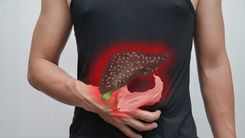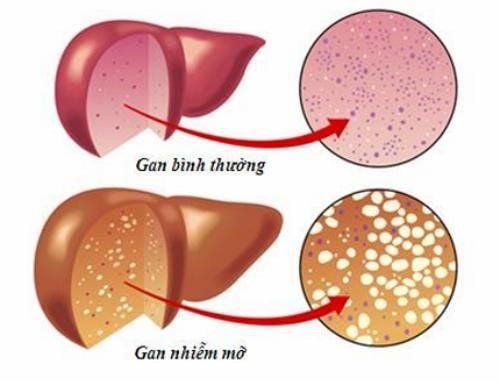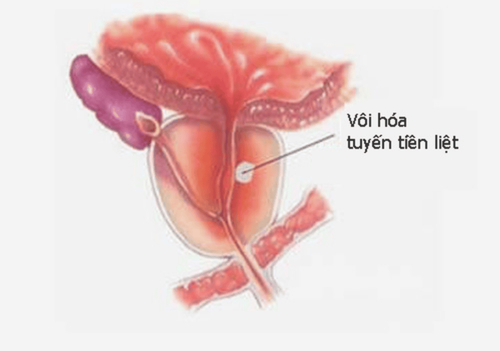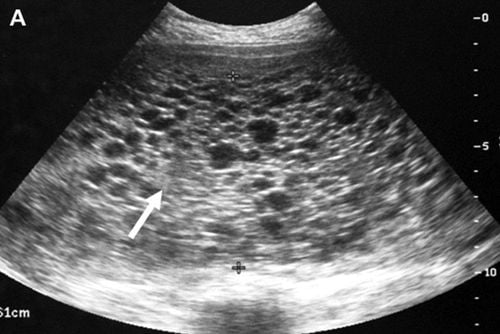Among all cancers, prostate cancer is ranked as the slowest growing cancer. In fact, the disease advances so slowly that physicians may recommend the “active surveillance" approach rather than immediate treatment. Some patients may never require any intervention. As such, what is the nature of prostate cancer development and the prognosis of this malignancy? The following article will provide more insights into the slowest growing cancer.
1. Metastasis of Cancer Cells and Cancer Development.
How does cancer progress in the human body? The human body is composed of trillions of cells. Physiologically, new cells will replace old ones before they die.
Cancer occurs when abnormal cells (cancerous cells) outgrow the immune system’s ability to manage them. Instead of dying, these abnormal cells continue to develop and divide uncontrollably, accumulating into layers, forming malignant tumors. This unchecked growth of cancer cells will lead to the malignant cells invading the surrounding tissues.
1.1 Why Do Cancer Cells Metastasize?
Cancer cells do not respond to signaling molecules that induce physiological cell death (or apoptosis), allowing them to persist, divide rapidly and effectively evade the immune system detection. So, how does cancer progress?
Initially, when cancer cells are confined to the tissue where they are developing, it is termed "carcinoma in situ" (CIS). Once these cells break through the tissue membrane and grow into other tissue types, the condition is referred to as invasive cancer, marking the beginning of systemic spread of cancer cells within the body.
The spread of cancer cells to distant parts of the body is known as metastasis.
Regardless of where the cancer spreads or what organ system it affects, the name of the malignancy refers to the original site of development. For example, if prostate cancer spreads to the liver, it is still classified as prostate cancer, not liver cancer.
While most cancers are solid tumors, this is not always the case. For instance, leukemia refers to conditions of blood cancer and is referred to as a "liquid tumor."
The pattern of metastasis depends on the malignancy type and original development site, however cancer typically spreads locally to adjacent tissues first.
The mechanisms of metastasis include:
- Tumors may push into nearby tissues or organs. Primary tumors can rupture, allowing cancer cells to spread and form secondary tumors in nearby areas.
- Cancer cells from tumors may infiltrate nearby lymph nodes, from which they spread via the lymphatic system to form new tumors in distant organ systems.
- Tumors, particularly solid tumors, require oxygen and nutrients to grow. Through a process called angiogenesis, tumors stimulate the formation of new blood vessels to support their growth, allowing cancer cells to enter the bloodstream and spread to distant locations.
1.2 Fast-Growing and Slow-Growing Cancers
Cancer cells with more genetic mutations typically proliferate faster than the cells with fewer mutations. Tumors are classified according to their abnormality under the microscope, as follows:
- GX: Undetermined grade
- G1: Well-differentiated or low grade
- G2: Moderately differentiated or intermediate grade
- G3: Poorly differentiated or high grade
- G4: Undifferentiated
Some cancers that tend to grow more slowly include:
- Breast Cancer, for instance Estrogen receptor-positive (ER+) and HER2-negative breast cancer
- Chronic lymphocytic leukemia (CLL)
- Colon and rectal cancers
- Prostate cancer
Certain malignancies, such as prostate cancer, can grow so slowly that physicians may recommend the “active surveillance" approach rather than immediate treatment. Some patients may never require any intervention due to this slow growth rate
A few examples of fast-growing cancers include:
- Acute lymphoblastic leukemia (ALL) and acute myeloid leukemia (AML)
- Certain aggressive breast cancers, such as inflammatory breast cancer (IBC) and triple-negative breast cancer (TNBC)
- Large B-cell lymphoma
- Lung cancer
- Rare forms of prostate cancer, such as small-cell carcinoma or lymphomas
However, aggressive or fast-growing cancers do not necessarily correlate with poor prognosis. In fact, many of these cancers can be treated effectively. Conversely, while other cancers may have slower growth rate, they are less likely to be detected only becoming more evident when they have metastasized systemically.
2. What is The Slowest Growing Cancer?
The prostate is a small, walnut-shaped gland located in the pelvis of men, adjacent to the bladder. It is often assessed during a digital rectal exam. Prostate cancer is a malignancy originating in the prostate gland, and the second leading cause of cancer-related death in men in the United States.
Prostate tumor growth can be either benign (non-cancerous) or malignant (cancerous).
Benign growths, such as benign prostatic hyperplasia (BPH):
- Rarely pose a life-threatening risk
- Do not invade surrounding tissues
- Do not metastasize to other organ systems
- Can resolve by itself or regrow very slowly (though benign tumors typical do not regrow)
Malignant growths (prostate cancer) can:
- Pose a life-threatening risk
- Infiltrate and grow into neighboring tissues (such as the bladder or rectum)
- Metastasize to distant locations and other organ systems within the body (e.g., lymph nodes or bones)
- Be curable in many cases, though some may relapse
Prostate cancer cells can spread by detaching from the primary tumor and traveling through blood vessels or lymph nodes to other sites of the body. After reaching other body systems, these cancer cells will adhere to surrounding tissues, forming a secondary tumour that will continue to cause damages at any locations that they have metastasized.
When prostate cancer metastasizes to a new location, the secondary tumor shares the same abnormal cell type, and the disease is still referred to as metastasized prostate cancer. For instance, if a prostate cancer has metastasized to the bones, the cancer cells that exist within the skeletal systems are in fact prostate cancer cells and not bone cancer cells. As such, this condition would not be referred to as bone cancer but rather prostate cancer in the bones.
To diagnose prostate cancer, physicians must also know the normal physiological functions of prostate glands.
2.1. Prostate Cancer
2.1.1 Symptoms
In the early stages, prostate cancer may not present any symptoms. When symptoms occur, they may mimic those of benign prostate enlargement (BPH). Additionally, prostate cancer can cause symptoms unrelated to BPH. If experiencing urinary issues, you should consult with your healthcare provider about your condition.
Common symptoms of prostate cancer include:
- Dull pain in the lower pelvic area
- Frequent urination
- Difficulty urinating, pain, burning, or weak urine flow
- Blood in the urine (hematuria)
- Painful ejaculation
- Pain in the lower back, hips, or upper thighs
- Loss of appetite
- Weight loss
- Bone pain
2.1.2 Causes
The exact cause of prostate cancer remains unclear. Autopsy studies have revealed that one in three men over the age of 50 showed the presence of cancer cells in their prostate glands; however, 8 in 10 of these cases exhibited small and benign tumors
While the cause remains unclear, several risk factors are associated with the disease.
2.2 Risk Factors for Prostate Cancer
- Age
The risk of having prostate cancers increases with the men’s age, however, the condition rarely appears in men under 40. Damage or mutations to the genetic sequence (DNA) of the prostate cell is more common in men over 55. This would lead to abnormal functioning of these cells, making them grow uncontrollably to form tumors.
While age is a significant risk factor for prostate cancer, smoking and obesity are strongly associated with an increased risk of death from the disease.
- Ethnicity
So far, African American men have the highest rates of prostate cancer. One in six African American men will be diagnosed with prostate cancer. Additionally, they will often acquire the malignancy at a younger age with more aggressive, fast growing and fatal tumors. The reasons for this higher prevalence remain unclear but may involve socioeconomic, environmental, dietary, or other factors. Other ethnicities such as Hispanic or Asian men are less likely to have prostate cancer.
- Family History
Men with a family history of prostate cancer will have a higher risk acquiring the condition. The risk will increase 2 to 3 fold if the patient’s father, brother, or son has had prostate cancer. In other words, the risk increases with the number of relatives diagnosed with prostate cancer. However, the relatives’ ages when first diagnosed with the condition are also important factors to consider.
- Smoking
Studies have indicated that heavy smokers may double their risk of developing prostate cancer. Smoking is also linked to an increased risk of death from prostate cancer.
However, after 10 years of quitting, the risk of prostate cancer decreases significantly and becomes comparable to that of a non-smoker of a similar age.
- Geographical Area
Prostate cancer and mortality rates vary worldwide, with higher rates in North America and Northern Europe. The higher rates in these regions may be attributed to better screening techniques, genetics, diet, lack of exercise, and environmental exposures.
- Diet
Dietary and lifestyle habits may influence the risk of developing prostate cancer.
Admittedly, the precise relationship is unclear. However, high caloric intake along with overconsumption of animal fats, refined sugars, and insufficient consumption of fruits and vegetables, along with physical inactivity, may also elevate risk of acquiring prostate cancer. Lack of exercise is also associated with other poor outcomes such as obesity (or being overweight), which also increases the risk of death from prostate cancer. As such, weight loss is highly recommended to reduce this risk.
3. Stages of Cancer Progression
Cancer stages are categorized based on the size of the tumor and the extent of its spread (or metastasis). This categorization helps physicians to make treatment decisions and provides general prognosis.
There are multiple staging systems used for various cancers. Common stages include:
- In situ: Abnormal cells are present but have not spread to adjacent tissues
- Localized: Cancer has not spread beyond its site of origin.
- Regional: Cancer has spread to nearby lymph nodes, systems or tissues.
- Distant: Cancer has spread to distant organs or tissues.
- Undetermined: Insufficient information to determine the stage.
or
- Stage 0 or CIS: Abnormal cells have been found but haven't spread into surrounding tissue (pre-cancer).
- Stages 1, 2, and 3: The cancer is diagnosed, and the numbers indicate the size and severity of the primary tumor and its metastasis.
- Stage 4: Cancer has metastasized to distant parts of the body.
Patient’s pathology can also use the TNM staging system which provides further detailed staging:
T: Describes the size of the primary tumor.
- TX: can not measure the primary tumor’s size
- T0: can not determine the location of the primary tumor
- T1, T2, T3, T4: describe the primary tumor’s size, severity and its metastasis to other body systems
N: Indicates regional lymph node involvement.
- NX: Can not determine the presence of cancer in regional lymph node
- N0: Did not find any presence of cancer in regional lymph node
- N1, N2, N3: Describe the numbers and locations of lymph nodes affected by the spread of cancer
M: Presence or absence of metastasis
- MX: Can not determine metastasis status
- M0: Cancer has not metastasized to other body systems
- M1: Systemic metastasis
4. Tumor Growth and Spread
4.1. Benign Tumors
Benign tumors are often non-cancerous. They are typically enclosed by normal cells and can not invade surrounding tissues or metastasize to other organ systems. Benign tumors may cause issues if they:
- Become large enough to press on organs, causing pain or discomfort or vision issues
- Are located in the brain
- Release hormones affecting bodily systems
- Benign tumors can often be surgically removed and do not typically recur.
4.2. Malignant Tumors
Malignant tumors are cancerous. They form when genetic mutations cause a gene to behave abnormally. These tumors can invade surrounding tissues, spread through the bloodstream, lymphatic system, and metastasize throughout the body. Malignant tumors tend to grow faster than benign ones.
Early cancer screening is considered essential for early detection and treatment, reducing treatment costs and mortality rates. Therefore, individuals of all ages should consider routine cancer screenings.
Please dial HOTLINE for more information or register for an appointment HERE. Download MyVinmec app to make appointments faster and to manage your bookings easily.
References: healthline.com, cancer.org, urologyhealth.org












